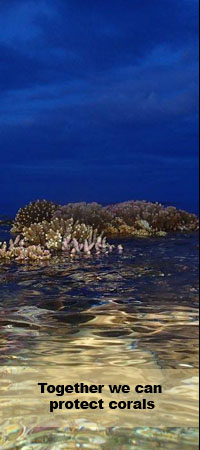|
Edangered Species International (ESI) creates and supports ocean conservation projects with the potential for significant and measurable impacts on peopleís lives and livelihoods. Curbing overfishing, pollution, and deforestation can be done with the involvement of coastal and land communities. Many activities conducted by ESI have significant positive impacts on the biodiversity where communities live. Thatís why we work with local communities to restore and protect forests, coral reefs, sea grass beds, and nesting ground for critical species. Sea grass meadows provide a major spawning area and juvenile nursery for fish. The protection of sea grasses - the only flowering plants that can live entirely in water - is part of our marine conservation work.
ESI has made considerable progress restoring coral reefs with local communities in the Coral Triangle. By reducing fishing pressure on fish and starfish that eat seaweeds, coral restoration is showing great results with corals growing back at many sites. By creating small coral reef reserves, corals and fish become abundant. Fish and other organisms are vital to reef ecosystems because they crop back the algae that would otherwise smother the reefs. Even modest restrictions on fishing around coral reefs can help maintain a healthy reef ecosystem.
During 2014 we supported more than twenty projects to strengthen existing marine protected areas and create marine protected areas. Examples of our activities include providing technical and scientific support to local communities, acquiring buoys to delineate protected areas, transplanting corals, planting mangrove trees, and educating fisherman communities.
Well-protected reefs typically have 1,000 to 1,500 kilograms of fish per hectare, and that as the density drops below 1,000 kilograms, early warning signs appear, including seaweed growth. Below a density of 300 kilograms of fish per hectare, reef ecosystems may face collapse. Because fishing pressure can be so intense along coastal communities in the Coral Triangle, ESI makes sure that many pockets of protection exists, allowing fish and other marine life to grow up and make lots of offspring. In countries like Malaysia, Indonesia, and the Philippines, due to socio-economic reasons, it is hard to just put reefs off limits where all coral reefs remain. The solution in protecting and restoring marine resources reside in full involvement of the local communities. Many of our success stories are the actions of one or a small number of people initially supported by ESI.
Join us! Your support can have tremendous impacts on threatened coral reefs and many other endangered species.
Links
All about coral reefs
Shallow-water coral reef ecosystems highly endangered
All about fish
Making conservation happen
Photo gallery: saving coral reefs
|
|
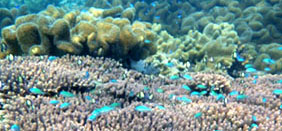
Coral reef under ESI protection in the Coral Triangle. © Endangered Species International
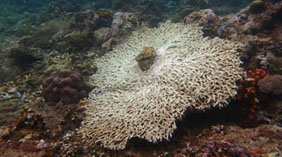
Large coral table damaged by fishermen, then rescued by ESI (see photo below). © Endangered Species International
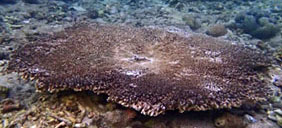
Large coral table rescued and protected by ESI (see photo above, same coral). © Endangered Species International
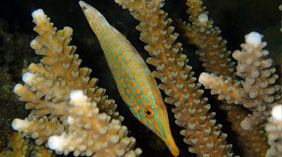
Protecting corals means protected fish © Endangered Species International
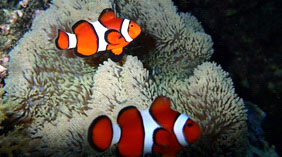
Clownfish and sea anemonefound in healthy coral reef habitat. © Endangered Species International
|

